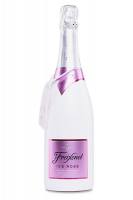What is Sekt?
The word Sekt is German and designates a quality sparkling wine. To be regarded as Sekt (and not just as sparkling wine), the beverage has to contain at least ten percent alcohol. Additionally, base wine and dosage have to come from the same region.
How is Sekt produced?
To create the base wine, the grapes are usually harvested before the general grape harvest. The reason for this is that during maturation, the acidity of the grapes decreases sharply. While this acidity is undesired in still wines, in sparkling wine, it actually works as a flavour booster.
Depending on the type of sparkling wine, the cellar master choose the next steps. A sparkling wine with young, fresh aromas has to be cleared of solids, little parts that might come from the pulp or the skin of the grape. The cellar master can also decide if the base wine should be processed immediately or if it should be matured a little longer.
When it comes to fermentation, one has to distinguish between three different approaches: the traditional bottle fermentation, the tank fermentation and the transversage method. The tank fermentation is the simplest procedure and is often used for the creation of Proseccos.
Both the transversage method and the traditional bottle fermentation start in the bottle, but differ in how the yeast is removed. During the more modern transversage method, the wine is pimped through a filter after fermentation and is then filled into new bottles, while during the traditional bottle fermentation the yeast is removed during the disgorgement. To use the traditional way, the bottles are riddled every day for several weeks. Afterwards, they are immersed upside down in a cold bath which makes the yeast freeze as a graft in the bottle neck. When the bottle is opened carefully, the yeast graft shoots out of the bottle and can be removed easily.
How is Sekt different from champagne and Prosecco?
While the word Sekt is usually used colloquially in German (like champagne is in English), champagne, Prosecco and Sekt are three different sparkling wine varieties which are produced differently. Both champagne and Prosecco may only be produced from specific regions and with specific grape variety. When it comes to the production of champagne, the traditional bottle fermentation is mandatory, while Prosecco is most often produced with tank fermentation. Another important fact: The word Prosecco can also refer to a brisk wine. What type of Prosecco youre dealing with can be looked up from the label. The term Spumante is used for sparkling wines, while a Frizzante is a brisk wine.
How do Sekts differ from each other?
Besides different origins and grape varieties, the dosage plays a big role for the aroma. The dosage describes the sweetness of the wine and comes in seven different grades (from dry to sweet): Brut nature, extra herb, brut, extra dry, dry, medium dry and sweet or doux.
A special type of Sekt is the rosé, which can be recognized by its pink to salmon colour.
What special Sekt brands are there?
Among the most popular Sekt brands are Rotkäppchen, Mumm, Asti Cinzano, Fürst von Metternich, Henkell Trocken, Söhnlein Brillant and Krimskoye.
Sekt at Gustero
At Gustero, you will find dozens of sparkling wines, including Sekt, champagne, Prosecco, vintage champagne and non-alcoholic sparkling wine. On this page you will mostly find sparkling wine brands that do not belong in the classic champagne and Prosecco categories. This includes the famous Henkell Trocken or the excellent Söhnlein Brillant. Additionally, you will find specialties like the Österreich Gold in our assortment a sparkling wine that contains 23-carat gold flakes. Browse our diverse selection now!




































